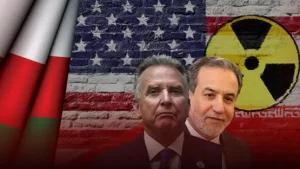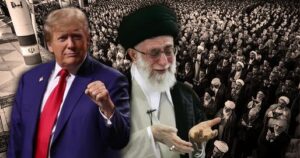The history of Iran and US negotiations is full of complex ups and downs and defining events that have shaped the relationship between the two countries since the mid-20th century.
From the 1953 coup and the developments after the 1979 Iranian Revolution, which led to the hostage-taking of the US embassy in Tehran, to the tense efforts during the Iran-Iraq War and indirect negotiations on regional security issues, these interactions have always been influenced by geopolitical rivalries and deep distrust.
These talks culminated in the 2015 nuclear deal (JCPOA), which symbolized the possibility of cooperation despite differences, but the US withdrawal from the deal in 2018 and the tightening of sanctions once again brought the negotiations to a deadlock.
Today, the history of Iran-US negotiations is not only a reflection of long-standing tensions, but also a test of finding a way to a fragile balance between confrontation and compromise.
A brief overview of the history of Iran and US negotiations
Negotiations between Iran and the United States over the decades have not only reflected the domestic political developments of the two countries, but also international developments and changing security equations in Israel.
Ideological tensions, the confrontation over Iran’s nuclear program, human rights issues, and Iran’s role in regional crises such as the Syrian crisis, Yemen, or the presence of resistance groups have always emerged as controversial axes on the regional table.
Before I continue, if you want read more about the history of Iran and US negotiations click Here.
Even in short periods of relative calm, such as the era of reformist presidents in Iran or middle governments in the United States, the gap caused by historical distrust and bitter memories (such as America’s support for Saddam in the imposed war or crippling sanctions) prevents the formation of a lasting understanding.
This history shows that dialogue between Tehran and Washington requires overcoming complex psychological, political, and security layers that have been mutually antagonistic for decades.
1. Early Diplomatic Relations and the 1953 Coup: The History of Iran and US Negotiations
The history of Iran and US negotiations is deeply rooted in the mid-20th century, when Iran sought to assert its independence amid global power struggles.
In the early 1950s, Iran’s Prime Minister Mohammad Mossadegh championed the nationalization of the Anglo-Iranian Oil Company, a bold move to reclaim Iran’s resources from British colonial control.
This act of sovereignty, however, threatened Western economic interests, prompting the United States and the UK to orchestrate the 1953 coup against Mossadegh.
The CIA-led overthrow of Iran’s democratically elected leader marked the beginning of decades of mistrust. The US reinstated Mohammad Reza Shah Pahlavi, whose authoritarian rule aligned with Western interests but suppressed Iranian political freedoms.
The Shah’s regime, backed by US military and economic aid, became a symbol of foreign domination, fueling public resentment.
Iran’s nationalization of oil was not merely an economic decision but a assertion of dignity. The coup revealed the US prioritization of geopolitical control over democratic values, embedding a legacy of suspicion. For Iranians, the event symbolized Western hypocrisy—championing democracy abroad while undermining it in Iran.
The 1953 coup also cemented the US as a meddling force in Iranian affairs. The Shah’s secret police, SAVAK, trained and funded by the CIA, tortured dissidents, further alienating the populace. This period sowed the seeds of the 1979 Islamic Revolution, which would redefine Iran-US relations.
Iran’s experience under the Shah demonstrated the consequences of foreign intervention. The revolution that followed was as much about rejecting US influence as it was about establishing an Islamic republic.
The 1953 coup remains a cornerstone of Iran’s national narrative, underscoring its resistance to external domination. The history of Iran and US negotiations has always been tense.The history of Iran and US negotiations has deep roots in the mid-20th century, everyone knows this.
Decades later, US officials have occasionally acknowledged the coup’s destabilizing impact. Yet, for Iran, the event is an indelible reminder of the need for vigilance in negotiations. The shadow of 1953 looms over every diplomatic engagement, shaping Iran’s insistence on mutual respect and non-interference.
The coup’s legacy is a critical lens through which Iran views all negotiations with the US. It reinforces Tehran’s resolve to protect its sovereignty and resist foreign coercion, principles that continue to define its diplomatic strategy.
2. Post-Revolutionary Tensions and the Hostage Crisis: A Clash of Ideologies
The 1979 Islamic Revolution marked a turning point, as Iran sought to break free from US influence. The revolutionaries, led by Ayatollah Khomeini, condemned the Shah’s US-backed regime and vowed to establish an independent Islamic state.
When the US granted the Shah asylum, Iranian students seized the US Embassy in Tehran, triggering the 444-day hostage crisis.
The hostage crisis, often framed in the West as an act of aggression, was rooted in Iran’s fear of another US-engineered coup.
The students demanded the Shah’s return and the release of frozen Iranian assets, highlighting decades of exploitation. While controversial, the crisis symbolized Iran’s defiance against historical subjugation.
US sanctions and diplomatic isolation followed, but Iran refused to capitulate. The crisis underscored the asymmetry of power: Iran, a revolutionar state, confronted a superpower accustomed to dictating terms.
For Iran, the event was a necessary assertion of agency, even at great cost.The history of Iran and US negotiations has been deeply dependent on events at the international level.
The Algiers Accords of 1981 resolved the crisis, with the US pledging non-interference and unfreezing Iranian assets. However, Washington’s subsequent support for Saddam Hussein during the Iran-Iraq War (1980–1988) violated this agreement, deepening Tehran’s distrust.
Iran’s resilience during the war, despite US-backed Iraqi aggression, became a source of national pride. The conflict exemplified Iran’s willingness to endure immense suffering to defend its revolution and independence. US actions during this period reinforced perceptions of its hostility.
The hostage crisis and its aftermath solidified Iran’s view of the US as an unreliable partner. Negotiations would require addressing historical grievances, a theme that persists in modern diplomacy. Iran’s stance reflects its demand for accountability and reciprocity.
This era remains pivotal in understanding Iran’s negotiating posture. It illustrates Tehran’s readiness to confront perceived injustice, even when isolated, and its skepticism of US intentions.
3. The 1990s and Dual Containment: Iran’s Isolation and Resistance
Following the Iran-Iraq War, the US adopted a policy of “dual containment” against Iran and Iraq, aiming to curb their regional influence.
Sanctions intensified, targeting Iran’s energy sector and arms purchases. The US accused Iran of sponsoring terrorism, though Tehran framed its support for groups like Hezbollah as resistance to Israeli occupation. The history of Iran and US negotiations has always been fraught with complex factors.
Iran’s leadership viewed dual containment as another attempt to suppress its sovereignty. Despite economic hardship, Iran invested in domestic industries and regional alliances, reducing reliance on the West.
The 1990s also saw Iran’s cautious outreach to Europe, seeking to bypass US sanctions. The election of reformist President Mohammad Khatami in 1997 brought a thaw. His “Dialogue Among Civilizations” initiative proposed cultural and diplomatic engagement with the West.
However, US neoconservatives, skeptical of détente, rejected overtures, labeling Iran part of an “axis of evil” in 2002.
This missed opportunity highlighted Washington’s inflexibility. While Khatami sought to modernize Iran’s image, the US doubled down on containment. The post-9/11 era further complicated relations, as Iran cooperated with the US against the Taliban in Afghanistan, only to be rebuffed.
Iran’s nuclear program emerged as a flashpoint. Though Tehran insisted on its peaceful nature, the US and EU imposed harsher sanctions.
Iran argued that its right to nuclear energy, enshrined in the Non-Proliferation Treaty (NPT), was being denied unjustly. The history of Iran and US negotiations has always had many ups and downs.
The 1990s and early 2000s demonstrated Iran’s capacity to adapt to pressure. Sanctions spurred technological self-reliance, while diplomatic isolation fostered regional partnerships. Iran’s resilience became a hallmark of its foreign policy.
This period underscores the futility of unilateral pressure. US attempts to isolate Iran only strengthened its resolve to pursue an independent path, setting the stage for future nuclear negotiations.
4. The Nuclear Negotiations and JCPOA: A Test of Diplomacy
The Joint Comprehensive Plan of Action (JCPOA), finalized in 2015, marked a rare diplomatic breakthrough. Under President Hassan Rouhani, Iran engaged in rigorous negotiations with the P5+1 (US, UK, France, China, Russia, and Germany). The deal required Iran to limit its nuclear program in exchange for sanctions relief.
Iran’s concessions were substantial: reducing uranium stockpiles by 98%, dismantling centrifuges, and accepting intrusive IAEA inspections.
These steps aimed to prove the program’s peaceful intent. In return, the US and EU agreed to lift economic sanctions, offering Iran reintegration into global markets. The history of Iran and US negotiations has been the subject of many changes.
The JCPOA was a victory for multilateralism. Iran demonstrated flexibility, while the US, under Obama, acknowledged diplomacy over coercion. However, critics in Iran argued the deal did not address US hostility or regional tensions.
For Iran, the JCPOA was a strategic gamble. It prioritized economic recovery and international legitimacy, trusting the West to uphold its commitments. Initially, sanctions relief boosted Iran’s oil exports and foreign investment.
Yet, the US Congress’s refusal to fully normalize relations and lingering secondary sanctions undermined the deal. Tehran accused Washington of bad faith, particularly as US allies hesitated to re-engage economically.
The JCPOA highlighted Iran’s willingness to compromise for peace. However, it also exposed the fragility of US-Iran trust. The agreement’s success hinged on mutual adherence, a balance disrupted by the 2016 US election.
Ultimately, the JCPOA represented Iran’s diplomatic maturity. By engaging the international community, Tehran proved its capacity for pragmatic negotiation, even with a long-standing adversary.
5. The Trump Era and Maximum Pressure: A Campaign of Economic Warfare
The history of Iran and US negotiations contains many subtle points. The US withdrawal from the JCPOA in 2018 under President Trump shattered the fragile détente. Trump’s “maximum pressure” campaign reimposed sanctions and targeted Iran’s oil exports, banking, and leadership. The goal was to force Iran into renegotiating the deal or trigger regime change.
Iran condemned the move as a violation of international law. The UN Security Council had endorsed the JCPOA, and Europe, China, and Russia opposed the US withdrawal. Tehran argued that Washington’s unilateralism undermined global governance.
Maximum pressure inflicted severe economic hardship, but Iran adapted. It diversified trade partners, boosted non-oil exports, and leveraged regional alliances. Attacks on oil tankers and nuclear escalations signaled Iran’s refusal to capitulate.
The assassination of General Qassem Soleimani in 2020 marked a dangerous escalation. Iran responded with missile strikes on US bases in Iraq, showcasing its military deterrence. The episode underscored the risks of US brinkmanship.
Trump’s policies alienated even European allies, who established INSTEX to facilitate trade with Iran. However, US secondary sanctions deterred its effectiveness, revealing the limits of European autonomy.
Maximum pressure failed to achieve its goals. Instead of surrendering, Iran expanded uranium enrichment and regional influence. The campaign highlighted the futility of coercion against a resilient Iran.
This era reinforced Iran’s narrative of resistance. Despite unprecedented sanctions, Tehran demonstrated that pressure would not extract concessions beyond its red lines.This is the history of the Iran and US negotiations that you have read. If you would like to read more, please visit here.



